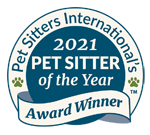From sniffing out people under inches of snow during an avalanche too barking to warn troops of an incoming mustard gas attack during World War I, we’re certainly lucky to have dogs on our team when times get tough.
As the world moves closer towards reopening, early detection of coronavirus is going to be essential. Experts recently recruited eight Labrador retrievers to join the fight, hoping their Herculean sniffing power will be able to detect the virus in humans, even with asymptomatic carriers.
A research project launched by The University of Pennsylvania set out to determine if canines would be able to identify any scents associated with the virus. If proven successful, the dogs could provide a quick, non-invasive means of testing that can be used in high-risk areas like airports, hospitals, and businesses.
According to Cynthia M. Otto, director of the Working Dog Center at The University of Pennsylvania’s School of Veterinary Medicine, viruses are known to have individual, peculiar scents. With an arsenal of over 300 million smell receptors, dogs are famous for sniffing out things like drugs and explosives. Research also shows they’ve also been able to successfully detect diseases like malaria. “Scent detection dogs can accurately low concentrations of volatile organic compounds, associated with various diseases such as ovarian cancer, bacterial infections, and nasal tumors.” She went on to add, “The potential impact of these dogs and their capacity to detect COVID-19 could be substantial. This study will harness the dog’s extraordinary ability to support the nations’ COVID-19 surveillance systems, with the goal of reducing community spread.”
The London School of Hygiene and Tropical Medicine has also been on the cutting edge of testing animals’ ability to detect the disease. Head of the school’s disease department, James Logan, believes that canine scent testing, “could revolutionize our response to Covid-19.” Logan and his team are optimistic that they’ll have a system in place within the next few weeks to have about 6 dogs working at airports in the United Kingdom. Their current model projects the dogs would be able to test about 250 people per hour. Ideally, the dogs would be stationed at points of entry, such as airports.
Training dogs to this degree obviously takes a great deal of effort. The Working Dog Center, located in Philadelphia, was selected to conduct the training. The first step was simple, teach the dogs to identify an odor for a food reward. After that, the dogs will train with urine and saliva samples of patients who tested positive. From that point on, the real challenge begins, learning to differentiate positive samples from negative samples in humans. Otto went on to say, “…the dogs don’t care what the odor is…what they learn is that there’s something different about that sample than there is about that sample.”
In times like these, it’s all hands on deck to defeat one common enemy. Fortunately for us, we may have some paws on deck in the near future as well.





